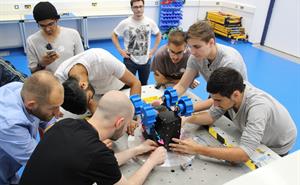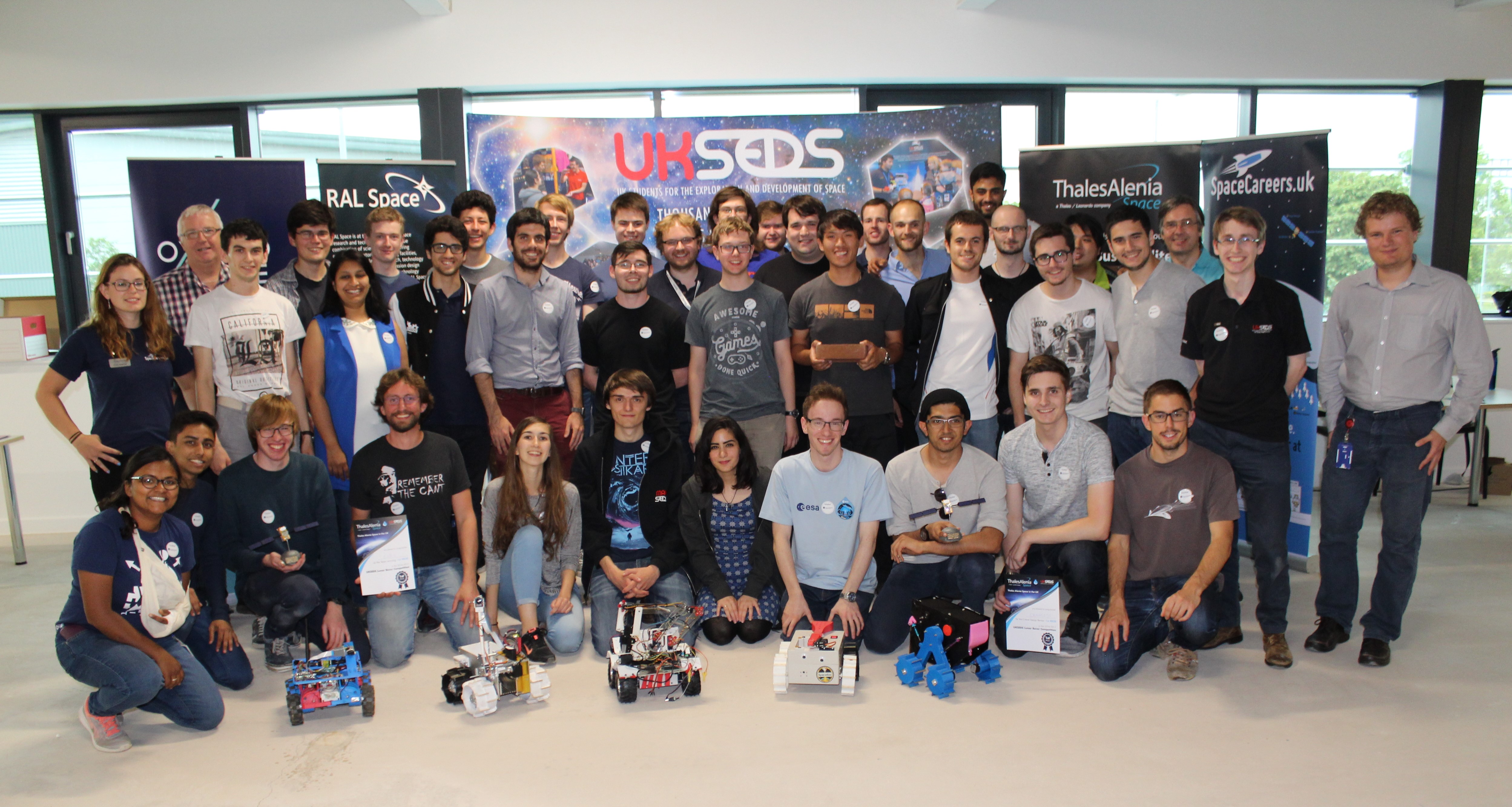The UKSEDS Lunar Rover Competition saw teams design, construct and test a lunar rover to a set of engineering and science requirements over a period of 9 months. Each team had to pass a comprehensive review panel by space industry engineers from Thales Alenia Space in the UK, RAL Space and Oxford Space Systems. Completion of the review unlocked funding to help teams build their rovers. At RAL Space the rovers were put through their final paces at the robotics trails area on terrain similar to that found on the Moon. They then had to withstand the stresses and strains of launch in the Vibration Test Facility as part of the final stage of the competition.
The University of Surrey team took first place in the competition, with Cranfield University winning a prize for the best critical design review. The other teams came from the Universities of Manchester, Bath and Bristol.
The SurreyEARS society at the University of Surrey said, "SurreyEARS is thrilled to have come first place in the inaugural UKSEDS lunar rover competition. It was great to see all our hard work pay off, and despite some technical issues on the competition day every team persevered and we enjoyed watching all the rovers undergo testing."
 The challenge is based upon a potential future robotic mission to a crater on the lunar south pole. As part of the mission, each lunar rover is required to drive through rough terrain to the bottom of the crater to collect ice samples. Like the real mission, the student's rovers had to be remotely operated via cameras in order to navigate rocks, steep slopes and designed to survive the rigorous shaking of a simulated rocket launch. As well as meeting these technical challenges, the students have successfully presented their designs to a range of space engineering experts at industry standard review panels.
The challenge is based upon a potential future robotic mission to a crater on the lunar south pole. As part of the mission, each lunar rover is required to drive through rough terrain to the bottom of the crater to collect ice samples. Like the real mission, the student's rovers had to be remotely operated via cameras in order to navigate rocks, steep slopes and designed to survive the rigorous shaking of a simulated rocket launch. As well as meeting these technical challenges, the students have successfully presented their designs to a range of space engineering experts at industry standard review panels.
“Opportunities like this are critical for building the practical skills that allow students to excel in the modern workplace.", said James Telfer, Chair of UKSEDS, “In particular, the focus on the processes used in the space industry and engagement with our industrial partners gives a great insight into the challenges that face a new space engineer. Plus, building robots is fun!"
The Lunar Rover Competition has been organised by UKSEDS, the UK's student space society and its partner, Thales Alenia Space in the UK and sponsors, STFC's RAL Space, Oxford Space Systems and Airbus. Inspired by past and future missions from NASA and the European Space Agency, the competition challenges undergraduate students to solve engineering problems, using industry-standard techniques, tools and processes. More information on the competition can be found at: http://robotics.ukseds.org/

For more information please contact: RAL Space Enquiries
